How Nepal's sweet gold is mined
Categories: Asia | Culture | Food and Drinks
By Pictolic https://pictolic.com/article/how-nepals-sweet-gold-is-mined1.htmlThe Gurung tribe in Nepal has been collecting wild honey on the tops of Himalayan rocks for centuries. Today, the existence of this ancient tradition is under threat. Commercialization and the growth of tourist interest have led to the fact that more and more tourists want to take part in dangerous fishing and join the honey hunt. Photographer Andrew Newey spent two weeks in Central Nepal with the gurung miners. During this time, he managed to capture all the dangers faced by collectors, and learn about the skills that are necessary for dangerous fishing.
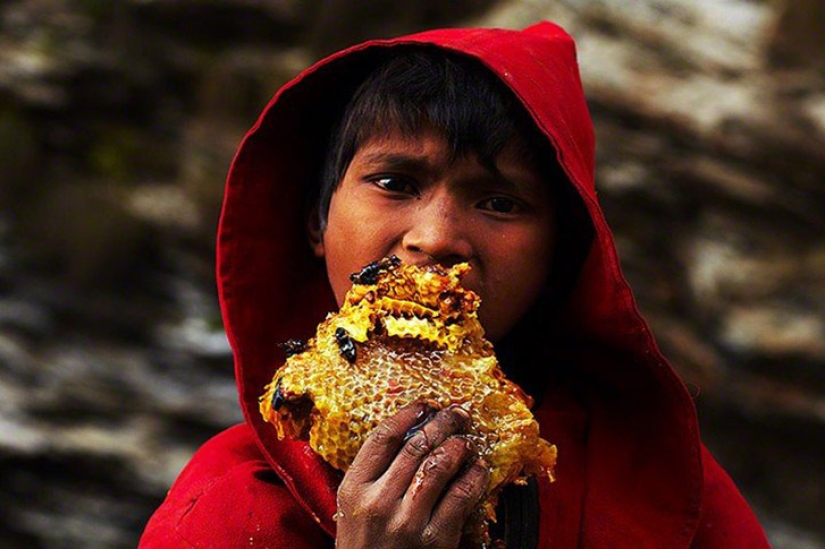
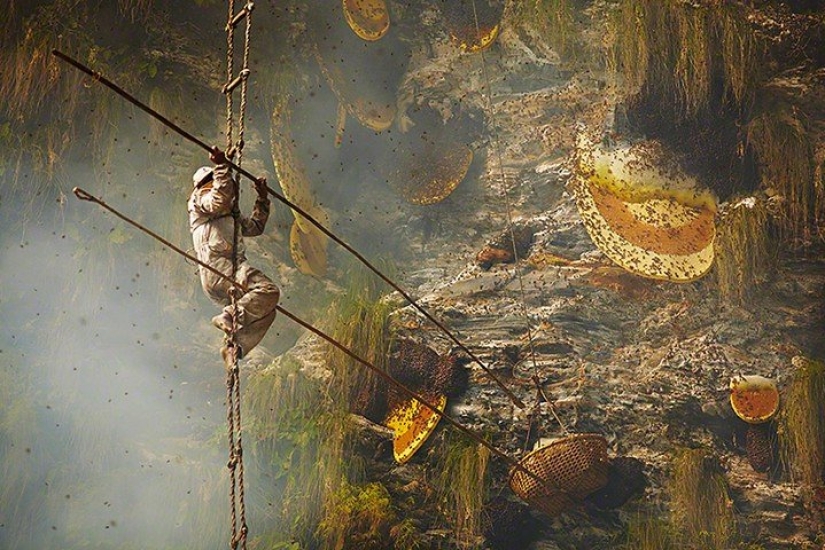
Honey hunters risk their lives every minute. In their craft, they use nothing but homemade rope ladders and long wooden sticks called "tangos". Most honeybee nests are located on inaccessible rocks on the south-western side — in these places bees can not be afraid of wild animals. Moreover, the south-western side is more exposed to direct sunlight.
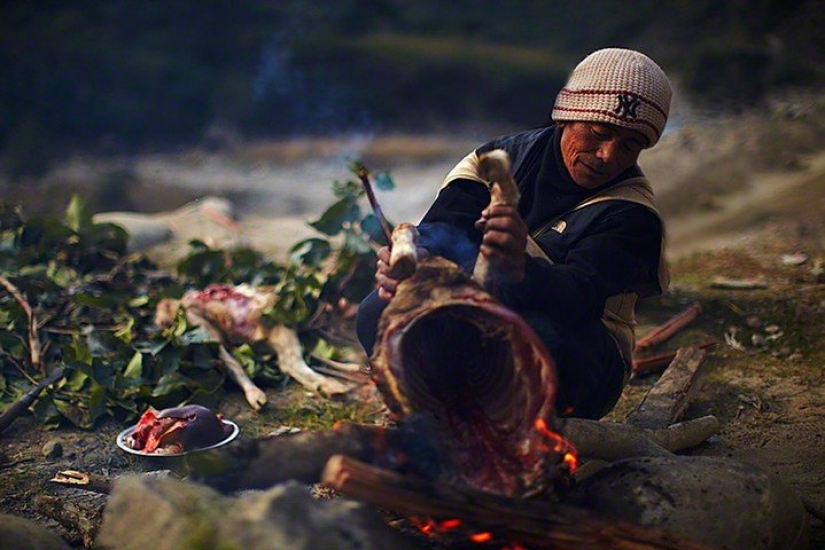
In December 2013, Andrew Newey spent two weeks in a remote village. He joined a three-day honey raid that started six weeks late that year due to climate change and declining bee populations. Before starting the hunt, the gurung perform a special ceremony to appease the mountain gods: the inhabitants sacrifice sheep, flowers, fruits and rice to the gods.
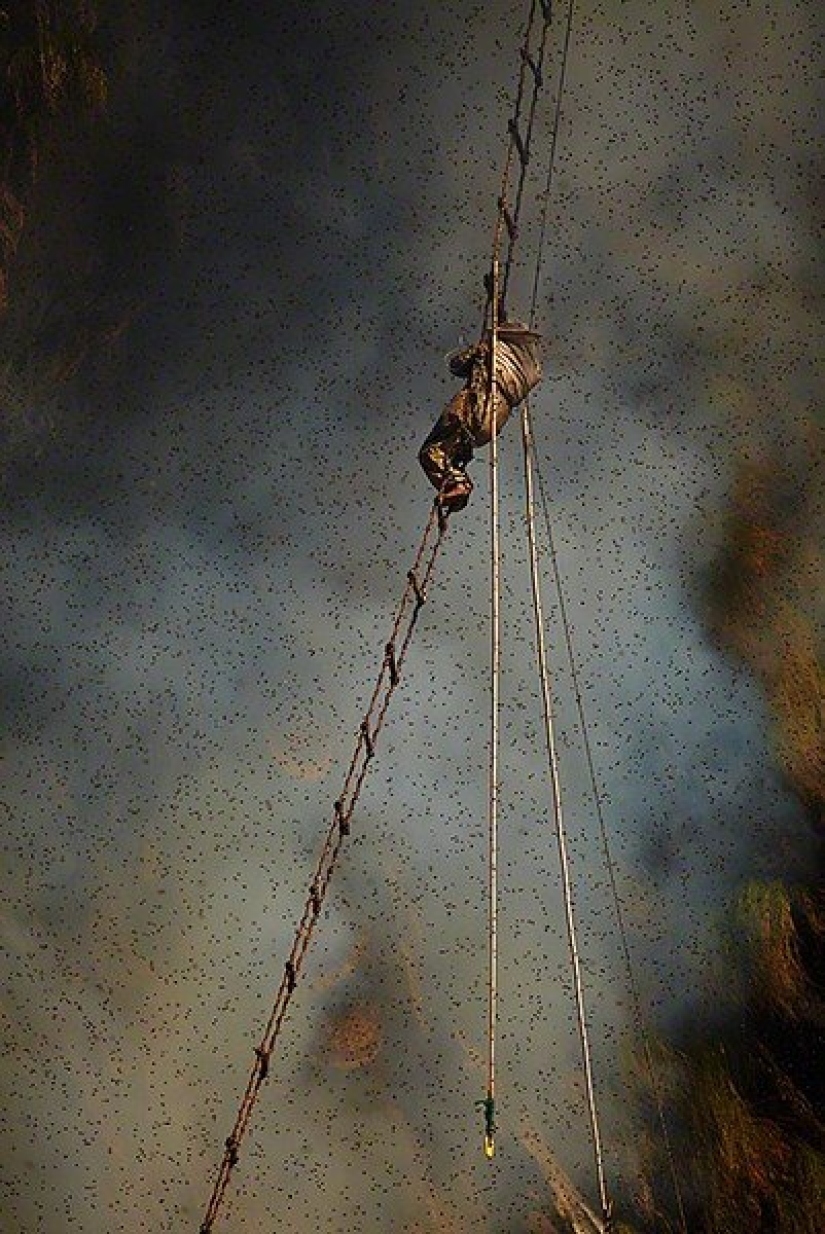
The hunter holds fast to an unreliable ladder, waiting for the smoke to scare off huge individuals of Apis Laboriosa — the largest honey bees in the world. A deathly silence hung around, the tension can be felt by the skin. Dozens of men help one collector or, in the local language, "kuichi".
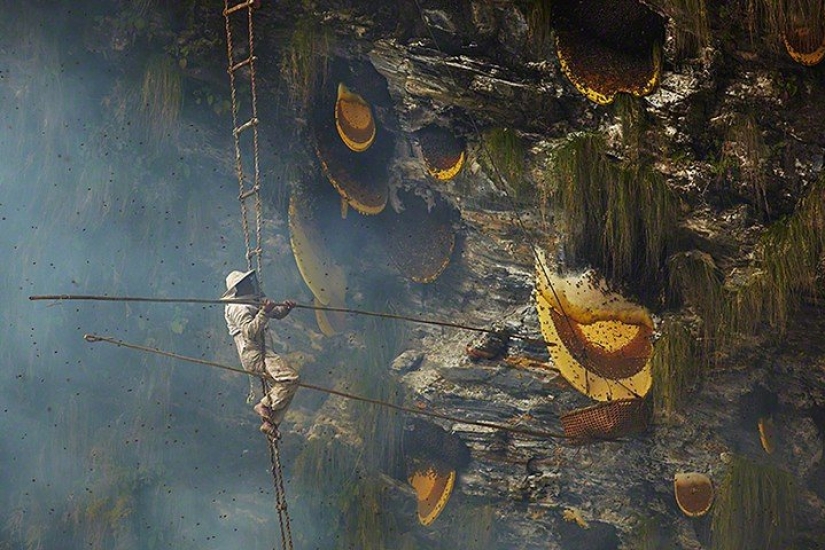
Engulfed in thick acrid smoke, the hunter randomly stretches the tangos forward to scoop up the honeycomb. If the attempt is successful, he throws the loot into the basket, which is attached to the second stick.
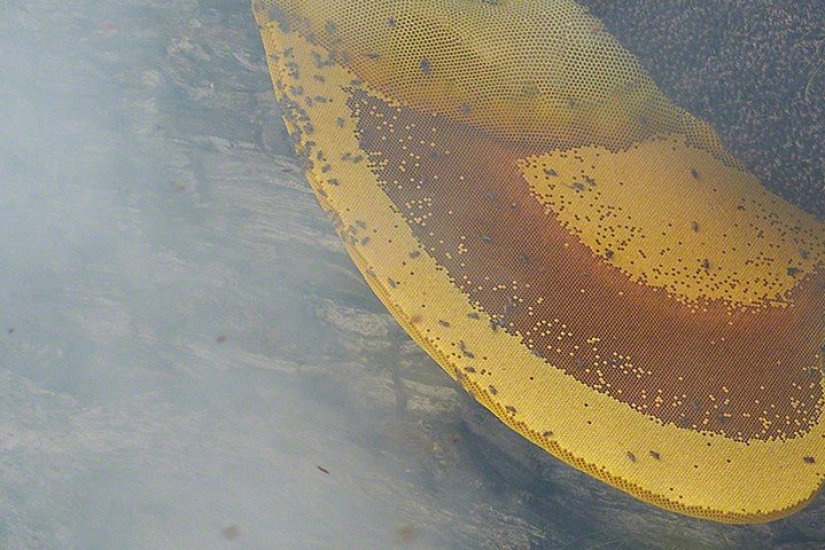
One of the most serious threats to this tradition is the growing reputation of wild Himalayan honey as one of the most effective medicines against infections. Today, it is being actively exported to Japan, China and Korea. Spring "red" honey is the most popular commodity: a kilogram on average costs about $ 15. This leads to the fact that communities are pushed away from the rocks by the state, which intends to monopolize the rocks with wild hives in order to establish uninterrupted production of medicine. At the same time, the younger generation prefers working in the city to dangerous traditional crafts.
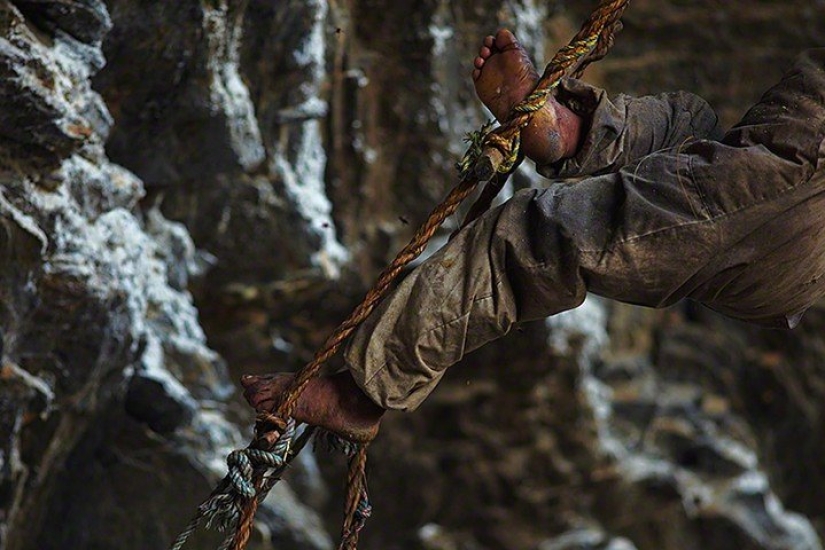
When a hunter goes down, blood, calluses and bite marks are visible on his body — the consequences of dangerous fishing.
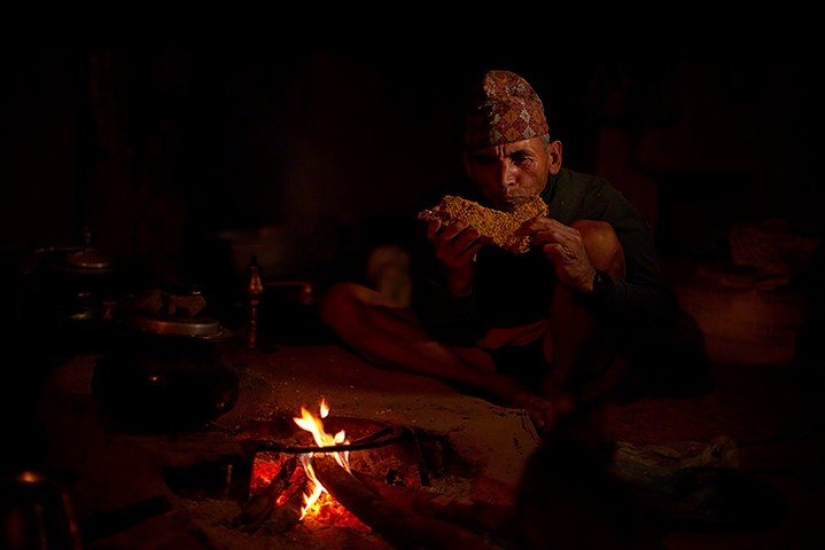
After a long hunt and a three-hour journey to the village, the hunter warms himself by the fire along with a piece of honeycomb, which he honestly earned.
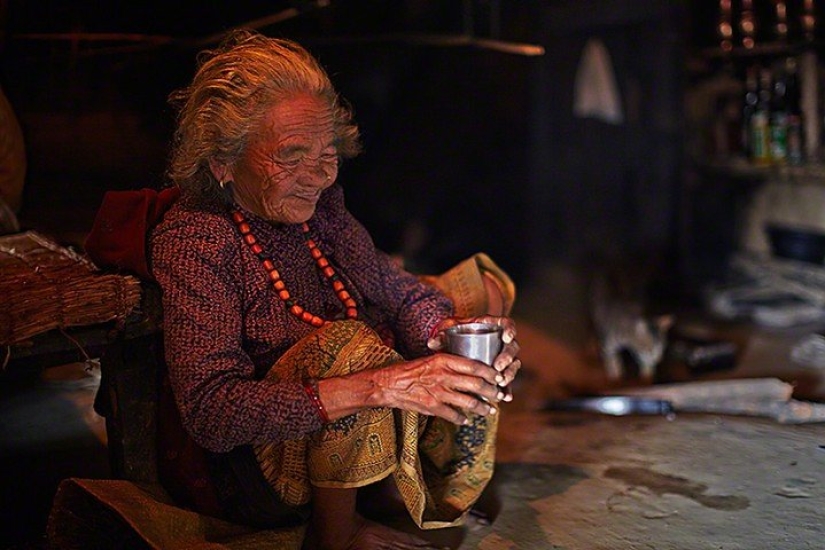
The extracted "gold" is divided among the villagers, and the women first of all brew honey tea.
Keywords: Mining | Documentary photography | Honey | Nepal | Hunting | Reportage | Traditions | Photography
Post News ArticleRecent articles

Markus Reugels is an incredibly talented German photographer who specializes in high-speed and macro photography. His photographs ...

Learn unusual and interesting facts about our planet and the creatures that inhabit it! -- >Ants, when dying, emit special ...
Related articles

In 1947, LIFE magazine photographer Alfred Eisenstadt took a series of photographs at the Swiss resort of St. Moritz, an island of ...

It can be difficult to imagine what life was like for several dozen (or even hundreds) years ago, and sometimes it seems strange to ...

Some believe they are bloodthirsty, but these girls say that crying after the murder of animals and even pray over them. Two ...

The Japanese craftswoman has honed her skills in working with wool so much that now her crafts - felted animal figurines - look as ...